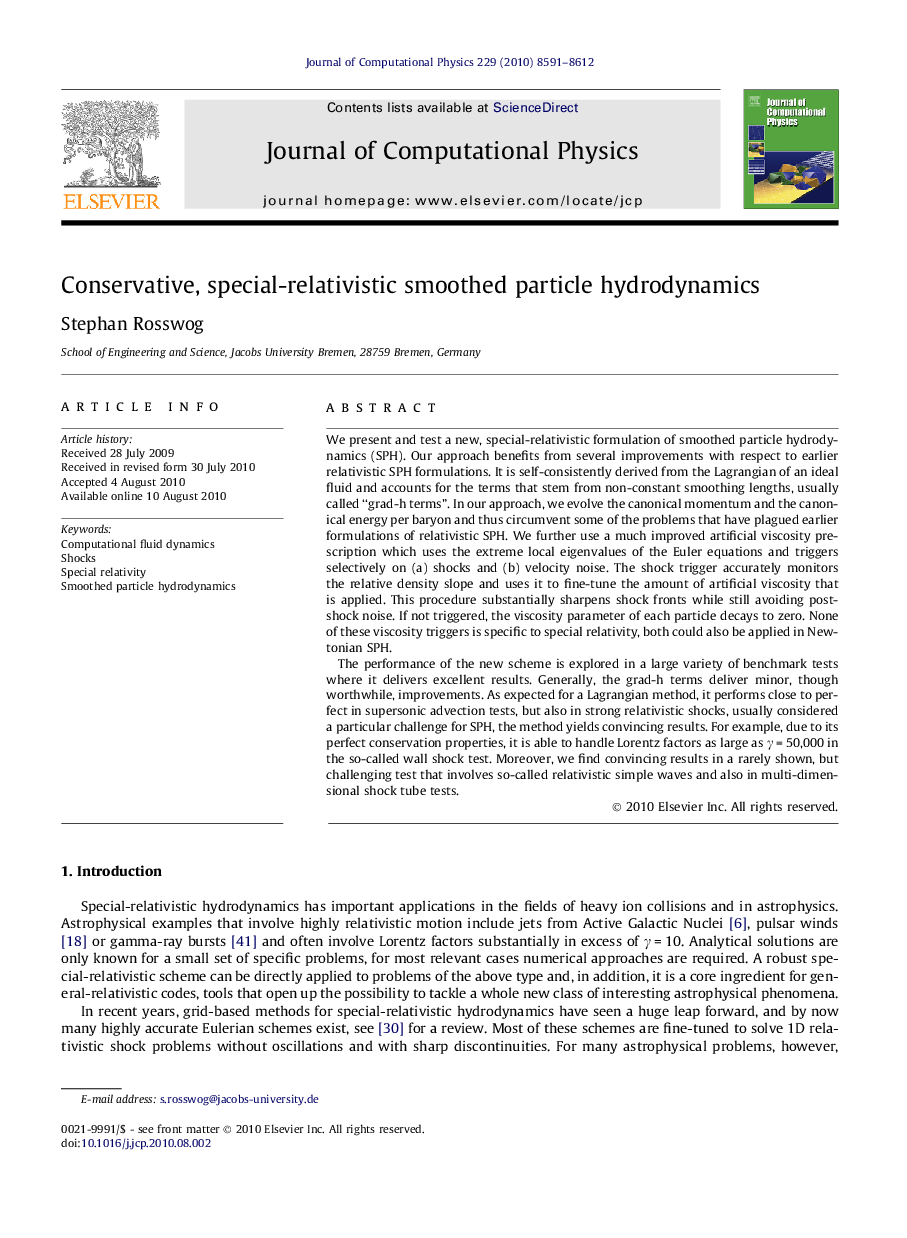| کد مقاله | کد نشریه | سال انتشار | مقاله انگلیسی | نسخه تمام متن |
|---|---|---|---|---|
| 520138 | 867698 | 2010 | 22 صفحه PDF | دانلود رایگان |

We present and test a new, special-relativistic formulation of smoothed particle hydrodynamics (SPH). Our approach benefits from several improvements with respect to earlier relativistic SPH formulations. It is self-consistently derived from the Lagrangian of an ideal fluid and accounts for the terms that stem from non-constant smoothing lengths, usually called “grad-h terms”. In our approach, we evolve the canonical momentum and the canonical energy per baryon and thus circumvent some of the problems that have plagued earlier formulations of relativistic SPH. We further use a much improved artificial viscosity prescription which uses the extreme local eigenvalues of the Euler equations and triggers selectively on (a) shocks and (b) velocity noise. The shock trigger accurately monitors the relative density slope and uses it to fine-tune the amount of artificial viscosity that is applied. This procedure substantially sharpens shock fronts while still avoiding post-shock noise. If not triggered, the viscosity parameter of each particle decays to zero. None of these viscosity triggers is specific to special relativity, both could also be applied in Newtonian SPH.The performance of the new scheme is explored in a large variety of benchmark tests where it delivers excellent results. Generally, the grad-h terms deliver minor, though worthwhile, improvements. As expected for a Lagrangian method, it performs close to perfect in supersonic advection tests, but also in strong relativistic shocks, usually considered a particular challenge for SPH, the method yields convincing results. For example, due to its perfect conservation properties, it is able to handle Lorentz factors as large as γ = 50,000 in the so-called wall shock test. Moreover, we find convincing results in a rarely shown, but challenging test that involves so-called relativistic simple waves and also in multi-dimensional shock tube tests.
Journal: Journal of Computational Physics - Volume 229, Issue 22, 1 November 2010, Pages 8591–8612